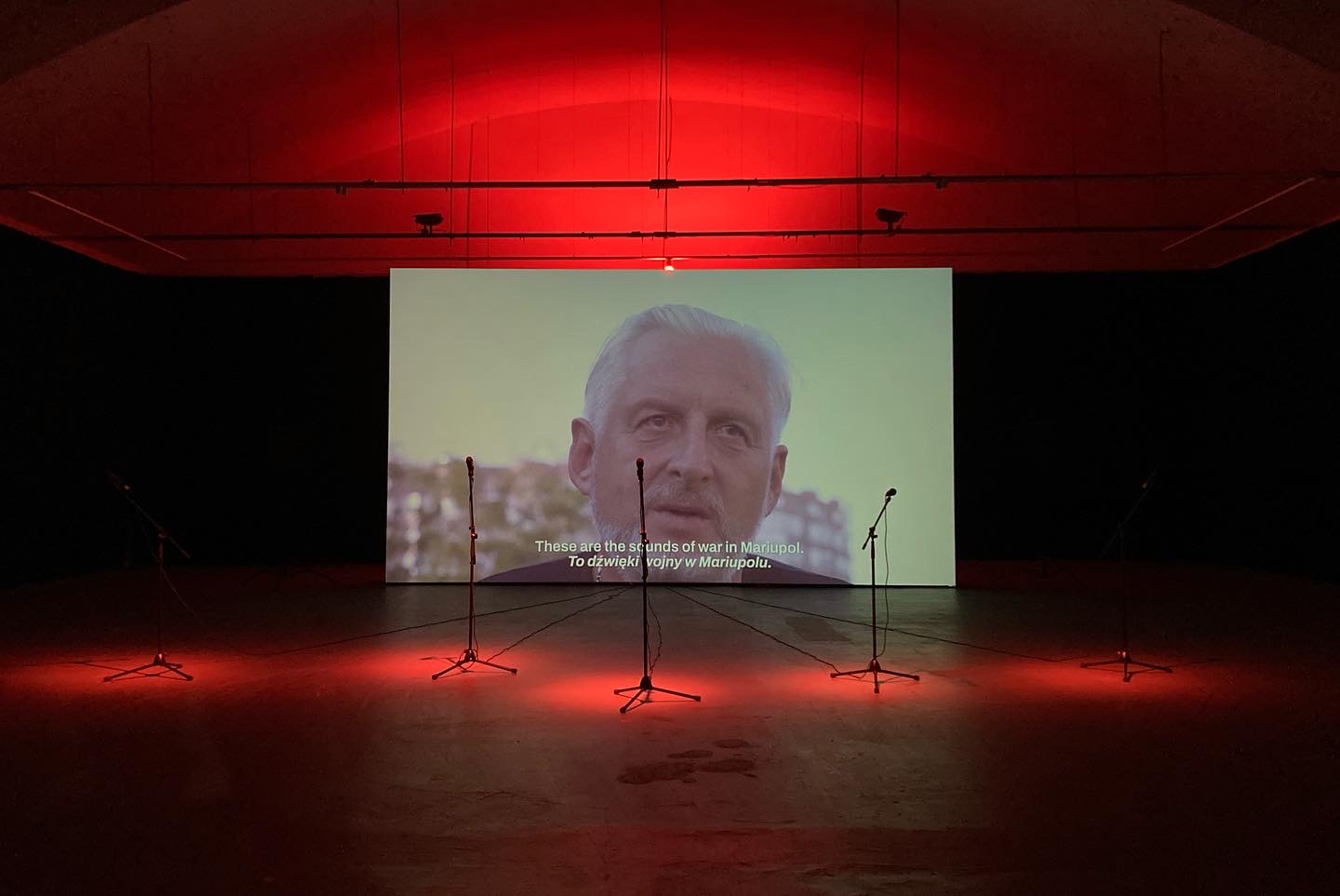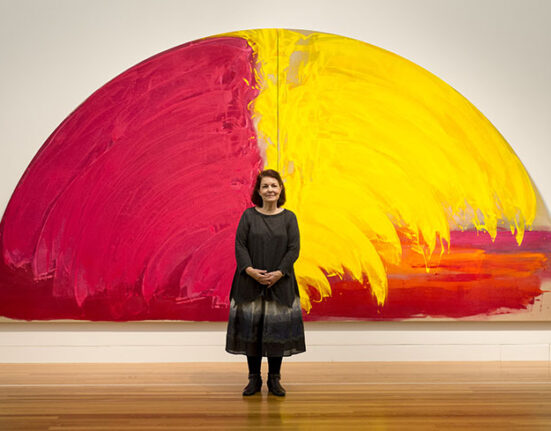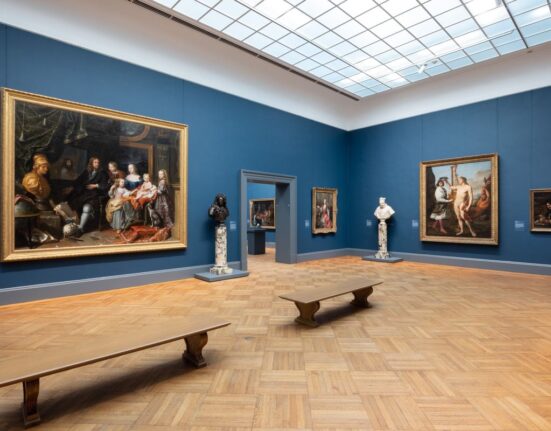Art & Exhibitions
The snubbed artist has branded the move an act of “censorship.”
Poland’s new government has controversially withdrawn the submission for its national pavilion at this year’s Venice Biennale, which had been organized by the previous right-wing populist ruling party Law and Justice. Now instead, Poland will showcase a performance video by the Ukrainian art collective Open Group.
The previous plan for Poland’s pavilion was an exhibition titled “Polish Exercises in the Tragedy of the World: Between Germany and Russia” by the painter Ignacy Czwartos. His paintings speared both Germany and Russia, detailing their various mistreatments of Poland throughout modern history. One painting shows former German chancellor Angela Merkel connected to Vladimir Putin by a St Andrew’s cross manipulated to look like a swastika.
The exhibition was branded “an anti-European manifesto” by Polish art critic Karolina Plinta, according to the Guardian, and its nationalist tone was widely regarded to be out of step with the biennale’s inclusive theme of “Foreigners Everywhere.” Even members of the jury that recommended Czwartos told the Art Newspaper that the submission represented a retreat into a “narrow-minded, ideologically paranoid and shameful position.”
Installation view of “The Painter Was Kneeling When Painting” exhibition by Ignacy Cwartos at Zachęta National Gallery of Art in Warsaw, Poland. Photo: Juliusz Sokołowski, courtesy of Zachęta National Gallery of Art.
The Law and Justice party had announced the pavilion on October 31, during the final few weeks of its eight year rule. It had just lost the majority vote in a significant parliamentary election held on October 15, which eventually saw a coalition formed by three opposition parties, ushering in a new centrist prime minister in Donald Tusk (who was previously in office from 2007-2014).
Poland’s new culture minister Bartłomiej Sienkiewicz wasted no time in withdrawing the submission, deciding instead to give the spotlight to a back-up option Repeat After Me by Ukrainian art collective Open Group. This performance video with a karaoke-style installation features Ukrainian refugees sharing their experiences of Russia’s war on Ukraine through spoken dialogue and by immersing viewers in the sounds of shelling, gunfire, and air raid sirens.
Speaking to the Art Newspaper, Czwartos branded the move an act of “censorship.” “The project refers also to the present day, above all to Putin’s brutal attack in Ukraine,” he added. “It is not an anti-European project at all, but rather it refers to the forces that had destroyed Europe in the past and today.”
Sienkiewicz has also removed the right-wing painter Janusz Janowski from his post as director of Zachęta National Gallery of Art, replacing him with former deputy director Justyna Markiewicz. Zachęta is Poland’s foremost contemporary art museum and its director oversees Poland’s participation at Venice. Czwartos was originally selected thanks to Janowski’s recommendation based on an exhibition that he had co-curated himself at Zachęta just a few months prior.
Check out our continually updated list of every national pavilion that will be on view at the 60th Venice Biennale, which runs from April 20 through November 24, 2024.
More Trending Stories:
Art Dealers Christina and Emmanuel Di Donna on Their Special Holiday Rituals
Stefanie Heinze Paints Richly Ambiguous Worlds. Collectors Are Obsessed
Inspector Schachter Uncovers Allegations Regarding the Latest Art World Scandal—And It’s a Doozy
Archaeologists Call Foul on the Purported Discovery of a 27,000-Year-Old Pyramid
The Sprawling Legal Dispute Between Yves Bouvier and Dmitry Rybolovlev Is Finally Over
Follow Artnet News on Facebook:
Want to stay ahead of the art world? Subscribe to our newsletter to get the breaking news, eye-opening interviews, and incisive critical takes that drive the conversation forward.






